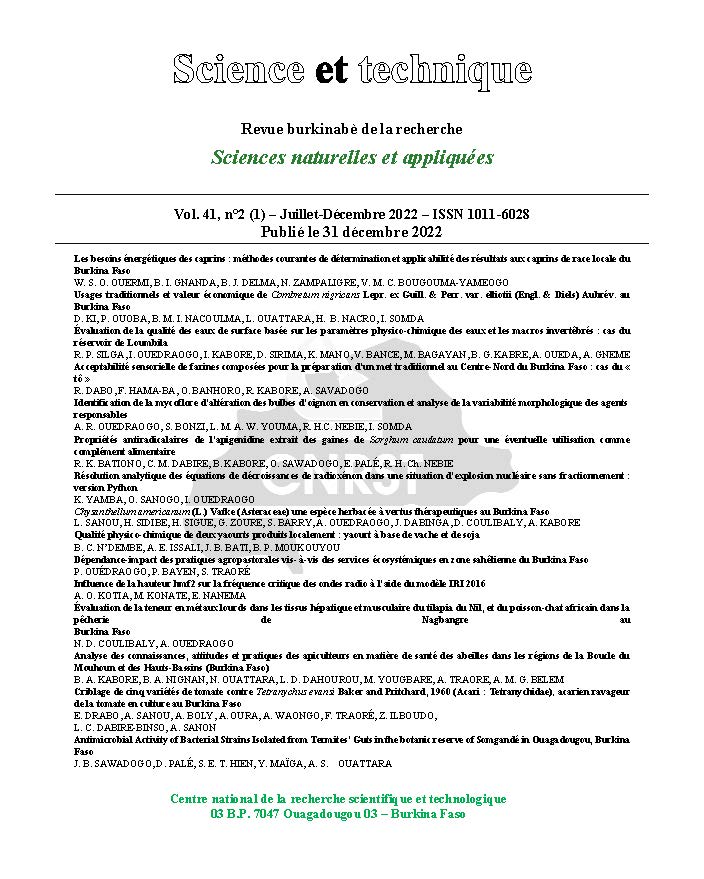Free radical scavenging properties of apigenidin extracted from Sorghum caudatum sheaths for a possible use in food supplement
Keywords:
anthocyanin extract, anti-radicalizing capacity, antioxidant contentsAbstract
During the last decades a large number of cardiovascular diseases are attributed to additives or food supplements of synthesis. For this reason, the food industry turns to the use of natural molecules as food additives. This work aims to valorize the anthocyanins of Sorghum caudatum sheaths for a possible use as food supplement. To do this, anthocyanins of Sorghum caudatum sheaths are obtained by exhaustion using ethanol acidified to 1% by hydrochloric acid. Using current, simple and accessible methods (Trolox Equivalents Antioxidant Capacity, Ferric Reducing Antioxidant Power, 2,2-diphenyl-1-picryhydrazyl) we determined the antioxidant content (TAO), the free radical scavenging power of the total antocyanin extracts and the isolated majority molecule. The results show that the free radical scavenging capacity is 40.224 µg/mL and 90.375 µg/mL respectively for Sorghum caudatum and Hybicus sabdariffa by DPPH method and 1993.344 µg/mL and 13401.960 µg/mL by ABTS method for Sorghum caudatum and Hybicus sabdariffa respectively. The isolated molecule is 10 times more active than the two crude extracts (199.124 µg/mL). The molecule can therefore be used as or in food supplement formulations.

